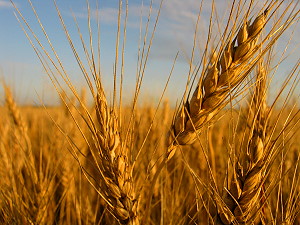 Crop Report Prepared by: Manitoba Agriculture, Food and Rural Initiatives GO Teams & Crops Knowledge Centre
Crop Report Prepared by: Manitoba Agriculture, Food and Rural Initiatives GO Teams & Crops Knowledge Centre
August 27, 2012 |
Northwest Region
Above seasonal daytime temperatures favoured good harvest progress throughout the Northwest Region. Conditions deteriorated only slightly late in the week with an unstable weather system interrupting harvest with occasional light thunderstorms and scattered rain showers with precipitation totalling 10 to 15 mm.
The winter wheat, fall rye and pea harvest is complete. Yield of winter wheat was variable, averaging 65 to 70 bu/acre, with generally good quality.
Harvest operations are more advanced in the south and eastern sectors of the Northwest Region. Spring cereal crop harvest is approximately 50% complete. Yields of red spring wheat are ranging from 35 to 65 bu/acre with a regional average around 50 bu/acre. Most spring wheat is generally grading #2 with low fusarium, wheat midge damage, ergot levels or weathering. Proteins are generally over 14%. Barley is ranging from 40 to 60 bu/acre and oats from 60 to 130 bu/acre; bushel weights are average but variable.
Approximately 40 to 50% of canola is combined; yields are ranging from 20 to 50 bu/acre with overall averages at 25 to 27 bu/acre. Around 20% of canola remains to be swathed. Occasional periods of high winds late in the week caused canola swaths to move and pile up with some localized losses due to shattering.
Silage corn, buckwheat, hemp and soybeans crops in the Dauphin, Ethelbert and Ste. Rose areas are advancing to later growth stages under favourable conditions and continue to show good yield potentials.
With the good harvest progress, some post-harvest field tillage work was completed.
The generally good weather and field conditions allowed green feed and native haying operations to continue with average overall yields. Some localized shortages are expected in those areas having had excess moisture issues. Silage corn harvest has not begun. Second cut forages are completed with average quality and yields. Across all areas, good quantities of straw are baled in good condition. Pasture conditions are generally adequate; however, some are beginning to decline under drier fall conditions or have not recovered from earlier excess moisture.
